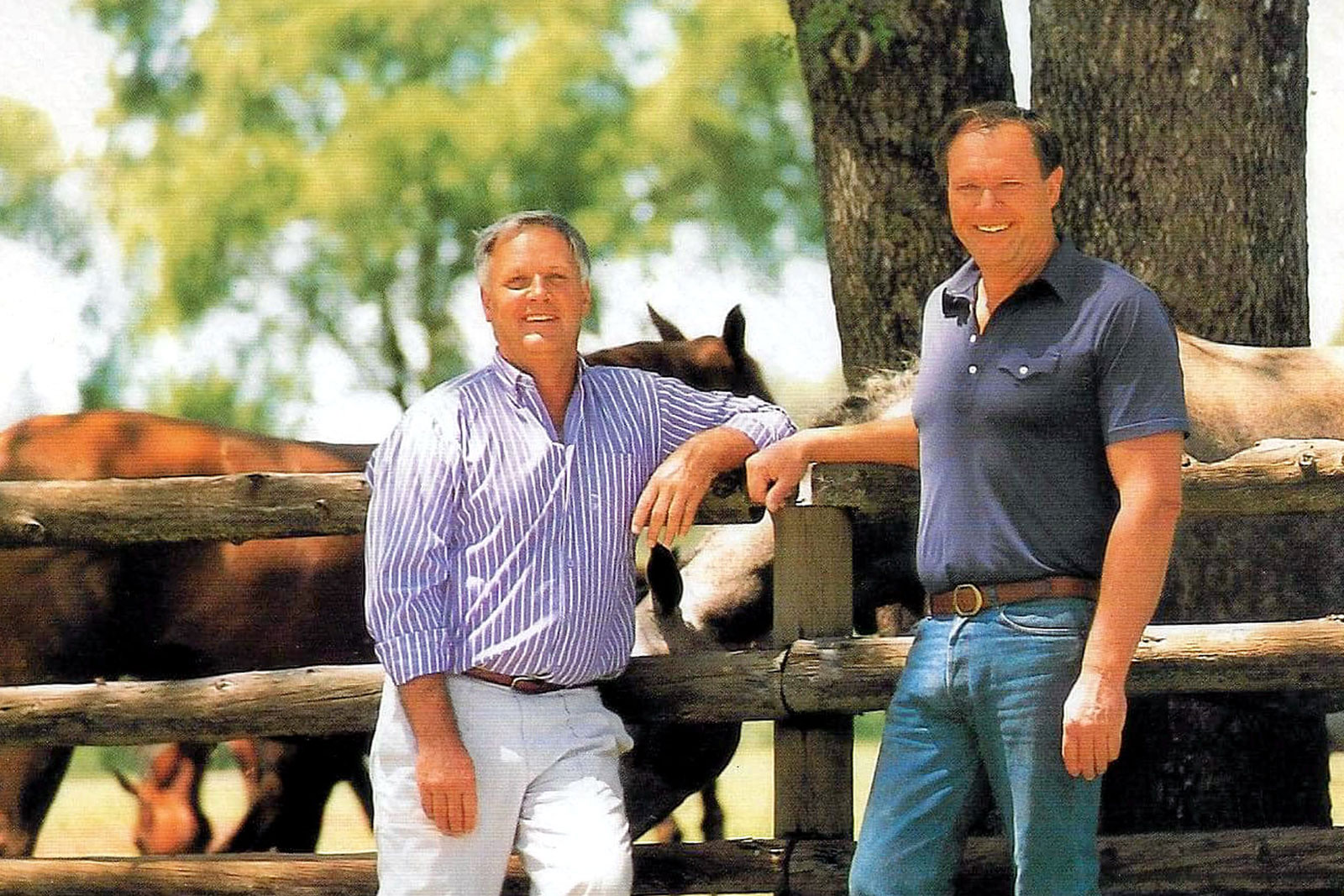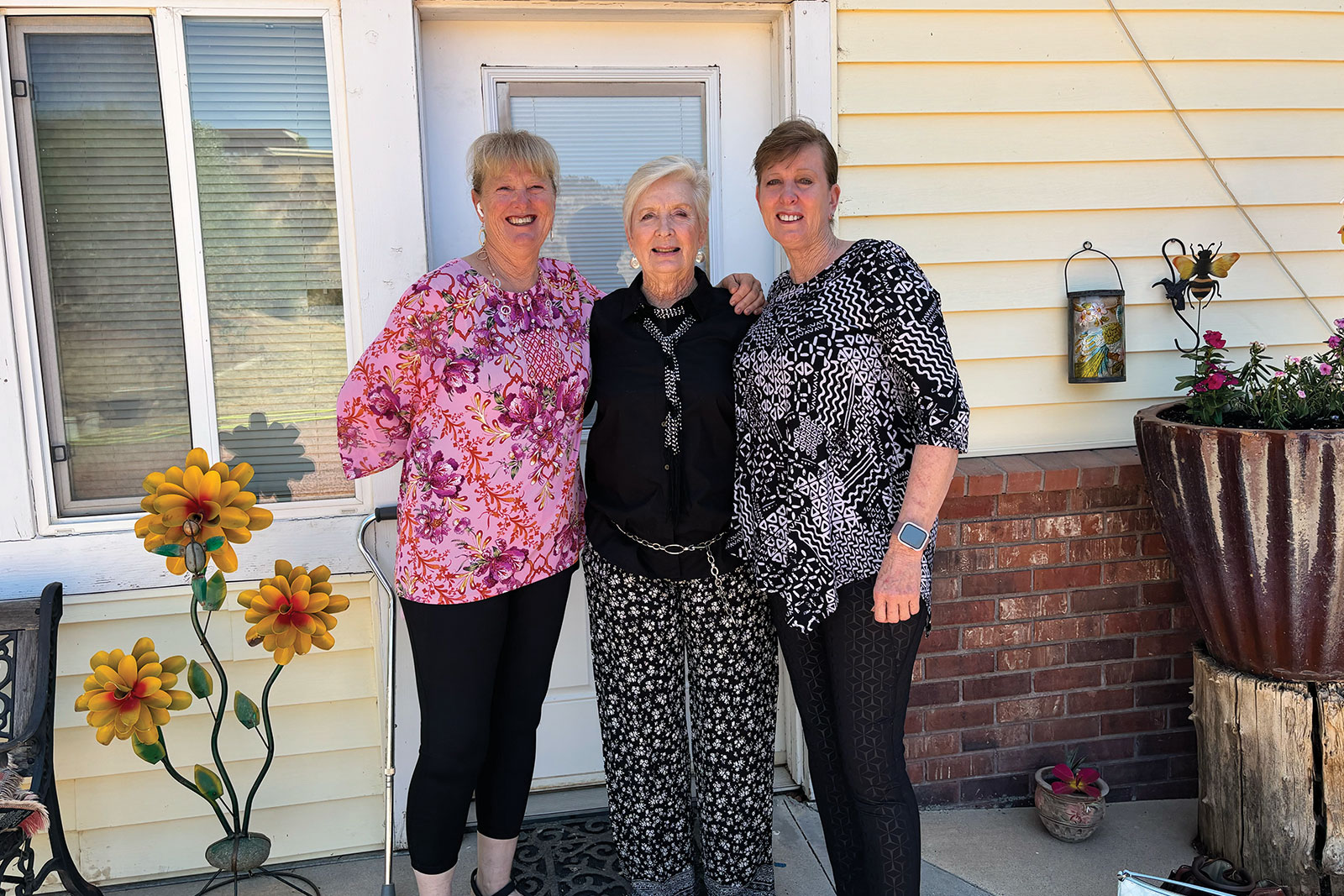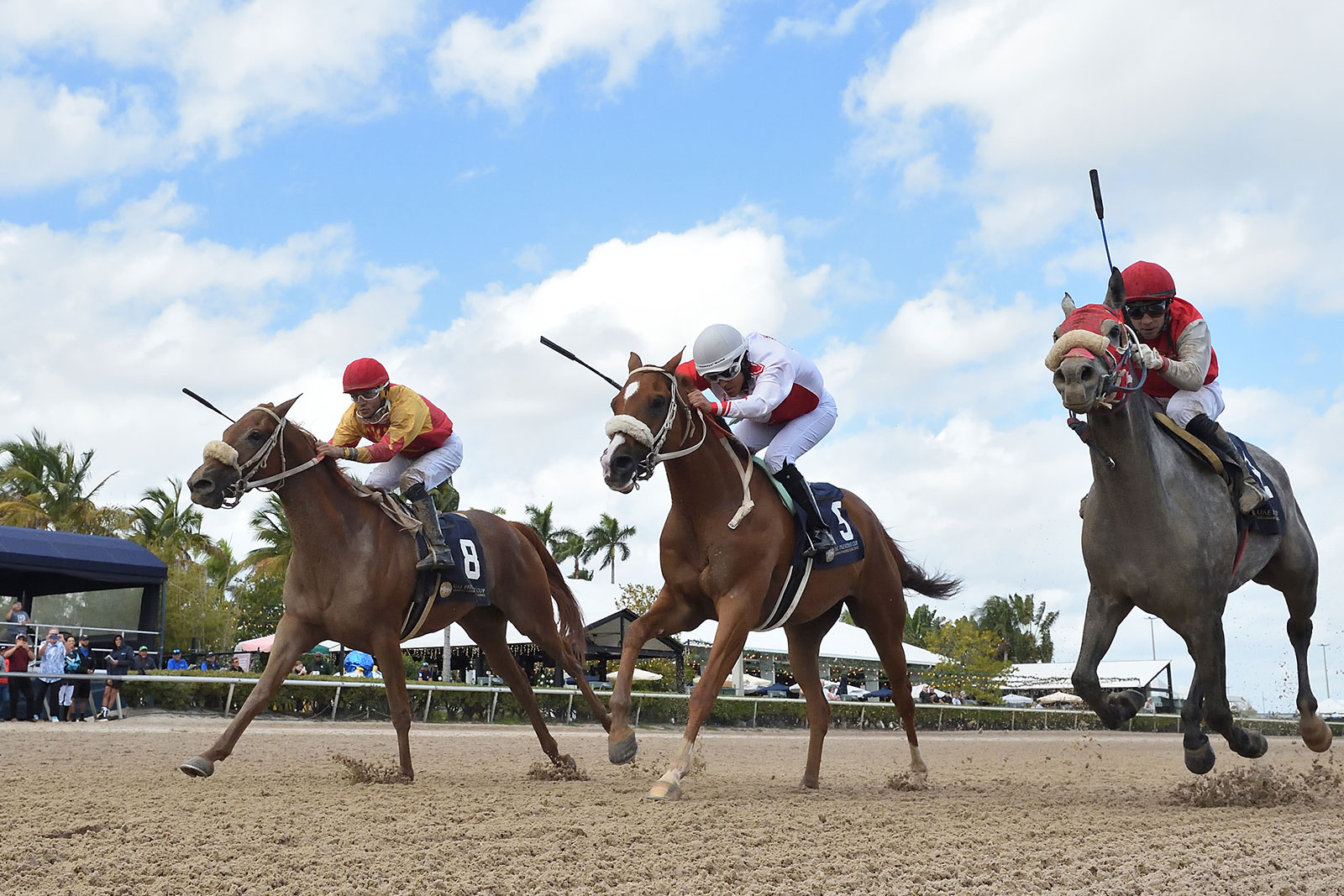By Lee S. Dougherty
As featured in the Summer 2024 issue of Arabian Horse World
As the greatest-ever coach of the Green Bay Packers, Vince Lombardi has superhero status in my neck of the woods. Lombardi’s wit and wisdom have extended his reputation far beyond his achievements on the gridiron. Aspiring athletes and entrepreneurs alike draw inspiration from his words. As one might expect, Lombardi had much to say about the value of teamwork. “The achievements of an organization are the results of the combined efforts of each individual,” he said, and the superstar program of BruMarBa Arabian Stud exemplifies the truth of this aphorism horse instead of her show horse, Vera opted for an Arabian mare who came without her papers but was fortunate to eventually track them down.
From its establishment, BruMarBa seemed destined to be at the forefront of the Arabian horse industry. Founded by trainer William “Bruce” Clark, BruMarBa started in Mead, Washington, but later moved to Garden Valley, California. Clark had begun breeding horses as a high school sophomore. He was joined by Gerald “Gerry” Alexander, who got into Arabian horses as a young oil executive. The partners built a world-renowned Arabian program that yielded many champion horses.
BruMarBa Arabian Stud imported more than 100 horses from Spain, Australia, Austria, England, and France. The program exported horses to countries including Brazil, Canada, Austria, England, and Germany. Their horses fetched good prices, too: in one year during the 1980s, the average price of a BruMarBa Arabian was $25,000, going as high as $100,000—big money back then.
One of BruMarBa’s undisputed stars was the Spanish Arabian *Barich de Washoe (1965-1991). Born to Aldebaran II, an in-foal mare imported by Charles Steen, *Barich grew into a large-eyed, sturdy stallion. At seven years old, he didn’t captivate Gerry Alexander. Still, they bought him as a last-minute addition to a group from Jack Dunn’s herd. In his first year at BruMarBa, Clark broke *Barich to ride and won the Western Pleasure championship with him. BruMarBa leased *Barich to the McDannald farm in Missouri for three years, where he sired “some super breeding mares,” according to Paul McDannald. While he was away, *Barich’s first BruMarBa foals arrived, showing the BruMarBa partners what kind of sire they’d scored. One filly from this crop, La Tres (out of Bint Elibn Mirage), became a Canadian Top Ten mare. Besides his strength and beauty, *Barich had a gentle, easy-going disposition. Mary Ann Hughes of Will Mar Arabians remembered him as “just a big, gentle guy.” *Barich’s caregiver, Juan Ortega, called him “muy amable.” Clark and Alexander traveled to Spain to learn more about their stallion’s pedigree, and what they discovered about him and the Spanish Arabians informed the future of their program.
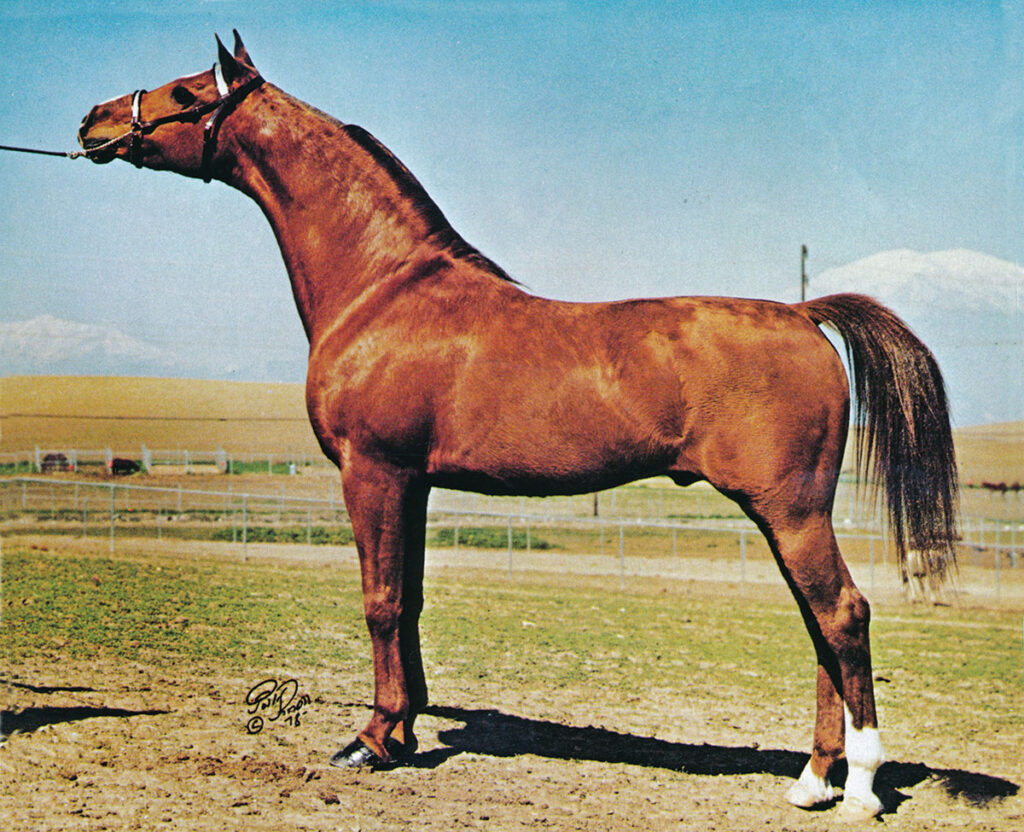
*Barich de Washoe
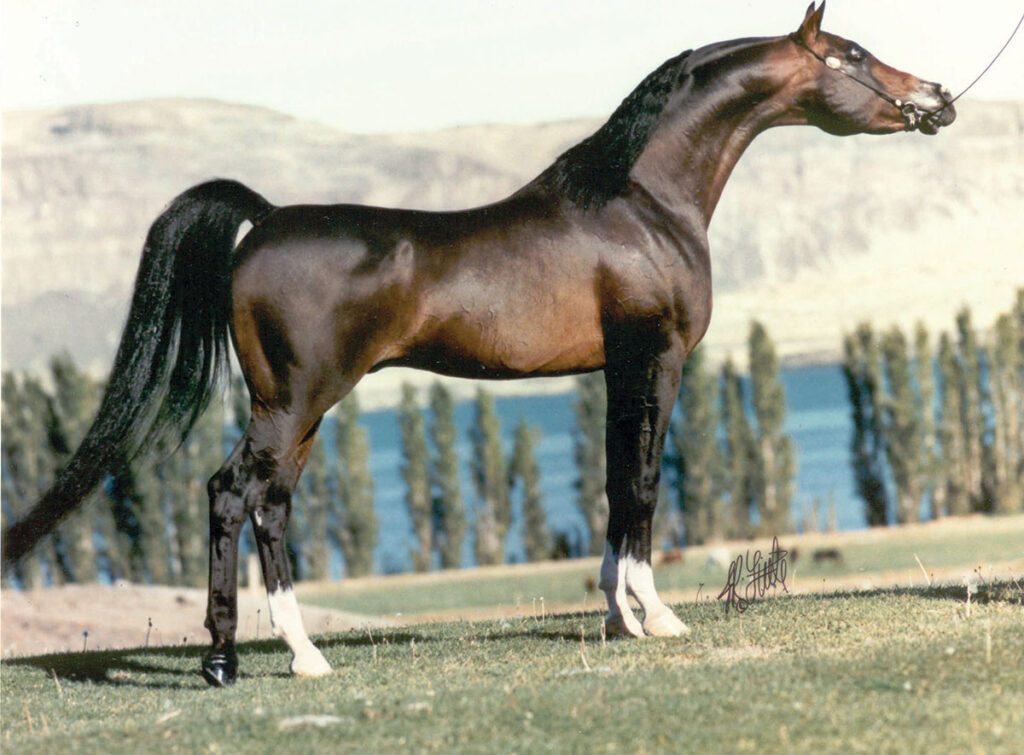
*Simeon Shai
*Barich de Washoe’s offspring showed what I like to call dependable consistency; BruMarBa could count on the type of foals he would produce. Bruce Clark said, “As it turns out, the poorer mares of a bloodline breed as well, with *Barich as the best of that bloodline means that his strength is coming through the blending of the blood.”
His finest foals came from line bred mares descended from *Raffles. Altogether, *Barich de Washoe sired 351 purebred foals, with dozens of national and regional winners among them. He was the first Spanish Arabian sire at BruMarBa, but not the last.
*Vallehermoso, bred in Spain by Luis Ybarra, joined the BruMarBa herd in 1982. With some *Barich de Washoe daughters, he sired foals described by Bruce Clark as “strong, robust,” and his sons became herd sires across the United States, Canada, and Europe. For myself, I was delighted with our beautiful *Barich De Washoe granddaughter, foaled in 1980. I had leased a lovely Egyptian-bred *Tuhotmos daughter and bred her to the very typey Bariata De Washoe (*Barich De Washoe x *Liata De Washoe), which gave us LD Mi Tercera.
Australian-bred Straight Egyptian *Simeon Shai came to Garden Valley in 1989, just two years before *Barich de Washoe passed away. Born in 1984 at Simeon Stud, the first foal of *Simeon Safanad (x Ra’adin Royal Star), he was a champion before he left his homeland. In his first year at BruMarBa, Shai won the title of Champion Stallion at Scottsdale, was crowned Canadian National Champion and United States National Champion, and crossed the Atlantic to become World Champion Stallion at Salon du Cheval in Paris. No stallion since, to my knowledge, has equaled this feat. After impressing judges and spectators in the show ring, *Shai proved himself an outstanding sire, fathering 457 foals. His beautiful daughter, BruMarBa Shai Dove, won the 2011 National Champion Mare title in New Zealand. Her offspring will carry BruMarBa’s excellence into the future.
Like all good breeders, Alexander and Clark considered the whole animal, not just conformation, when breeding. BruMarBa Arabian Stud selected and produced horses with temperaments as beautiful as their bodies. In 1990, Gerry Alexander explained, “We have also, always, bred for horses with good minds, which is usually reflected in the eyes. We breed for horses with well-shaped necks, long forearms, well-shaped clean joints, and excellent coupling and hindquarters. Those are the working horses, ‘horseman’s horses.’” The result was an almost uniform look: large, dark eyes, well-set ears, sturdy yet graceful bodies. The BruMarBa facilities were stress-free environments where these excellent horses could live good lives. Photographs of the 250-acre Garden Valley farm show expansive green pastures with ponds and shade trees.
BruMarBa Arabians are known and loved all over the world. The horses’ beauty, athleticism, and longevity speak to the vision, dedication, and hard work of Gerry Alexander and Bruce Clark. The Arabian horse world celebrated Gerry’s 90th birthday in February. Bruce passed away in late 2015, and tributes poured in, honoring his life spent in service to the Arabian horse.
What can we learn from the success of BruMarBa? Passion sets the fire, and success keeps it burning. Research pays dividends. We might not all have the natural gifts of breeders like Bruce Clark and Gerry Alexander. Still, we can follow their example by learning as much as possible about these beautiful horses we love, breeding them wisely, training them well, giving them good lives, and always striving for that elusive perfection. Lombardi perhaps knew and said it best: “Perfection is not attainable. But if we chase perfection, we can catch excellence.”



